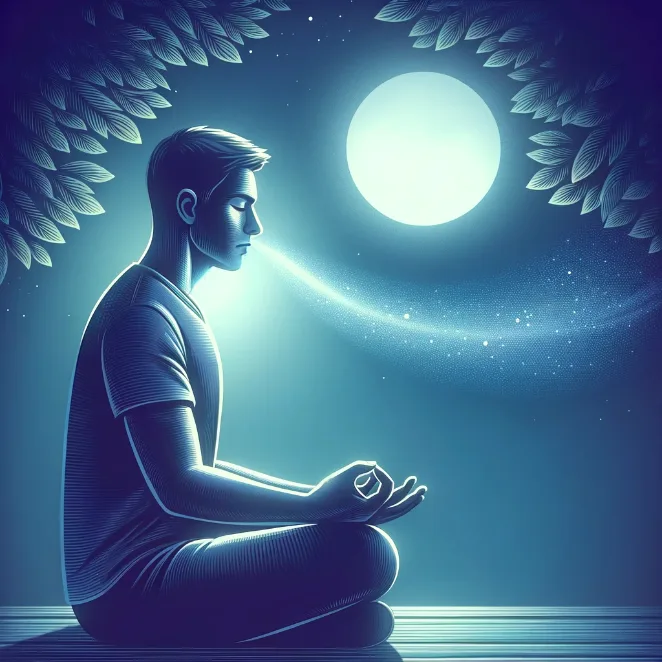
Meditation For Sleep
In today's fast-paced world, the struggle with insomnia is increasingly common. The inability to fall asleep or stay asleep can take a toll on one's physical and mental well-being. While there are various remedies available, meditation offers a holistic and effective approach to address the root causes of sleeplessness. In this article, we will explore meditation techniques tailored specifically for insomnia and how they can help you achieve a restful night's sleep.
article by Hina Kurosawa
Understanding Insomnia
Before delving into meditation techniques, it's essential to understand what insomnia is and what causes it. Insomnia is characterized by difficulty falling asleep, staying asleep, or experiencing non-restorative sleep. It can be a result of various factors, including stress, anxiety, depression, poor sleep habits, medical conditions, or lifestyle choices. Chronic insomnia can lead to fatigue, decreased cognitive function, mood disturbances, and even physical health issues.

The Power of Mindfulness Meditation
Mindfulness meditation is a powerful tool for managing insomnia. This technique involves paying focused and non-judgmental attention to the present moment. By practicing mindfulness, you can learn to quiet the racing thoughts and worries that often accompany insomnia. Mindfulness meditation helps individuals become more aware of their thoughts and feelings without becoming entangled in them.
To practice mindfulness meditation for sleep, find a quiet and comfortable place to sit or lie down. Close your eyes and bring your attention to your breath. Inhale slowly and deeply through your nose, counting to four, then exhale through your mouth, also counting to four. Focus all your attention on the sensation of your breath. When your mind wanders, gently bring it back to your breath without judgment. Consistent practice can help calm the mind and promote better sleep.

Body Scan Meditation
Body scan meditation is another effective technique for addressing insomnia. It involves systematically bringing your attention to each part of your body, from head to toe, to release tension and promote relaxation. This practice can be particularly useful for individuals whose insomnia is linked to physical discomfort or muscle tension.
To practice body scan meditation, lie down in a comfortable position. Begin by focusing your attention on your toes and gradually work your way up through your body. As you scan each body part, intentionally release any tension or discomfort you may be holding. By the time you reach the crown of your head, you should feel a sense of deep relaxation. This practice can be done as part of a bedtime routine to signal to your body that it's time to relax and sleep.

Guided Visualization
Guided visualization is a meditation technique that involves creating a mental image or scenario to promote relaxation and sleep. It can be particularly helpful for those whose insomnia is related to racing thoughts or anxiety. Guided visualization provides the mind with a positive and calming focus.
To practice guided visualization, you can use pre-recorded audio guides or simply create your own imagery. Start by finding a quiet and comfortable place to sit or lie down. Close your eyes and take a few deep breaths to relax. Then, imagine a serene and peaceful place, such as a beach, a forest, or a meadow. Engage all your senses in this mental landscape, imagining the sights, sounds, smells, and sensations. The more vividly you can immerse yourself in this mental sanctuary, the more effective this technique can be in promoting sleep.
Yoga Nidra
Yoga Nidra, often referred to as "yogic sleep," is a guided meditation practice that leads you into a state of conscious relaxation. It is deeply restorative and can be a potent remedy for insomnia. Yoga Nidra guides you through a systematic body scan and a journey of self-awareness, allowing you to release physical and mental tension.

To practice Yoga Nidra, you can follow guided recordings or classes. Find a quiet and comfortable place to lie down, and listen as the instructor leads you through the meditation. The practice typically includes body awareness, breath control, and visualization. Yoga Nidra can be especially effective for individuals with chronic insomnia, as it promotes relaxation at a profound level.
Meditation offers a natural and sustainable solution for insomnia by addressing its root causes, such as stress, anxiety, and racing thoughts. The techniques discussed in this article, including mindfulness meditation, body scan meditation, guided visualization, and Yoga Nidra, can all contribute to better sleep quality and improved overall well-being. Incorporating these meditation practices into your daily routine can pave the way for restful nights and refreshed mornings.
Published: 11/30/2023
Modified: 11/30/2023
More predictions
Come back here soon to learn more about yourself and your future


Journaling As A Meditative Practice
Meditation comes in various forms, and one particularly accessible and beneficial method is journaling. While we often associate meditation with sitting in silence, journaling offers a unique meditative experience that allows individuals to explore their thoughts, emotions, and inner selves on paper. In this article, we will delve into the art of journaling as a meditative practice, exploring its numerous benefits for mental well-being and self-discovery.


Using Mala Beads For Meditation
Meditation is a powerful practice that brings peace and mindfulness into our lives. Many meditation techniques incorporate tools to aid in concentration and focus, and one such tool is the Mala beads. These beaded necklaces, often associated with spiritual traditions like Buddhism and Hinduism, serve as both practical and symbolic aids in meditation. In this expanded article, we will delve deeper into the world of using Mala beads for meditation, understanding their significance, how to choose the right Mala beads, and how they can enhance your meditation practice.